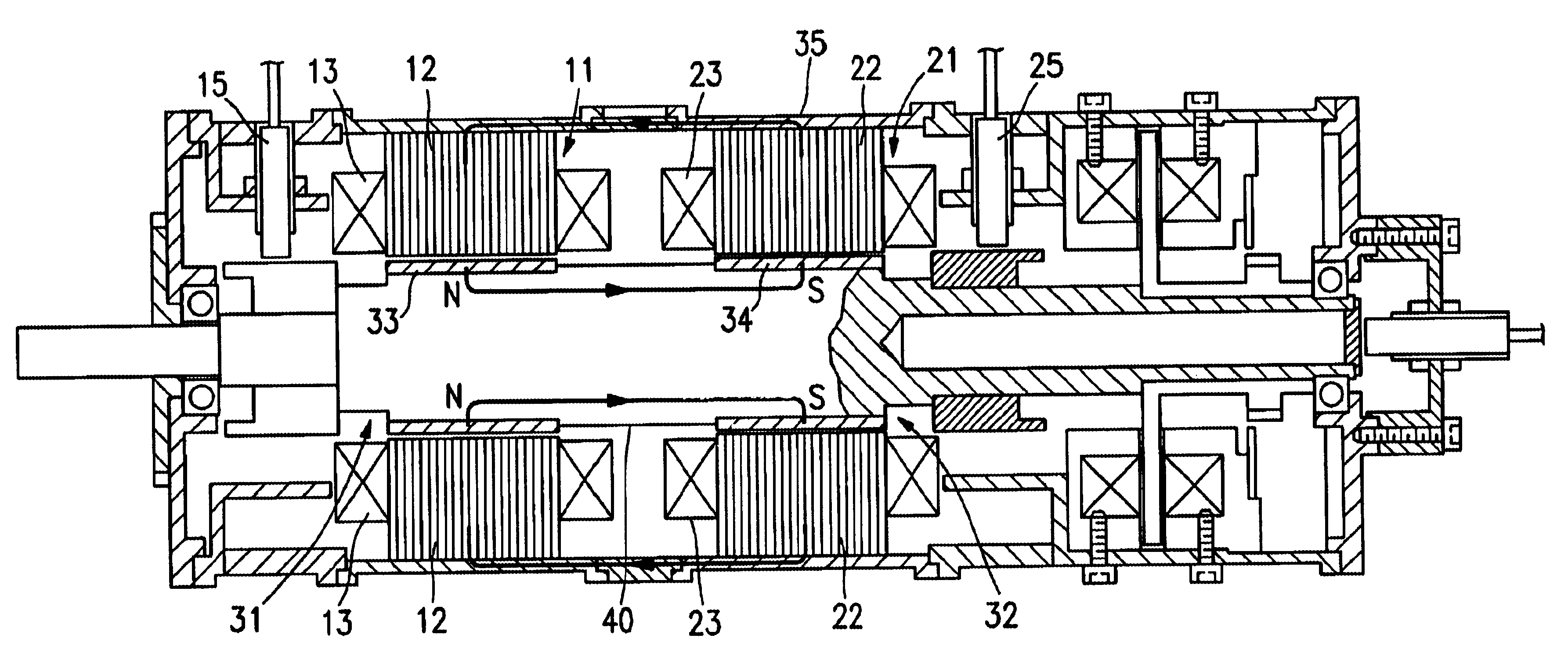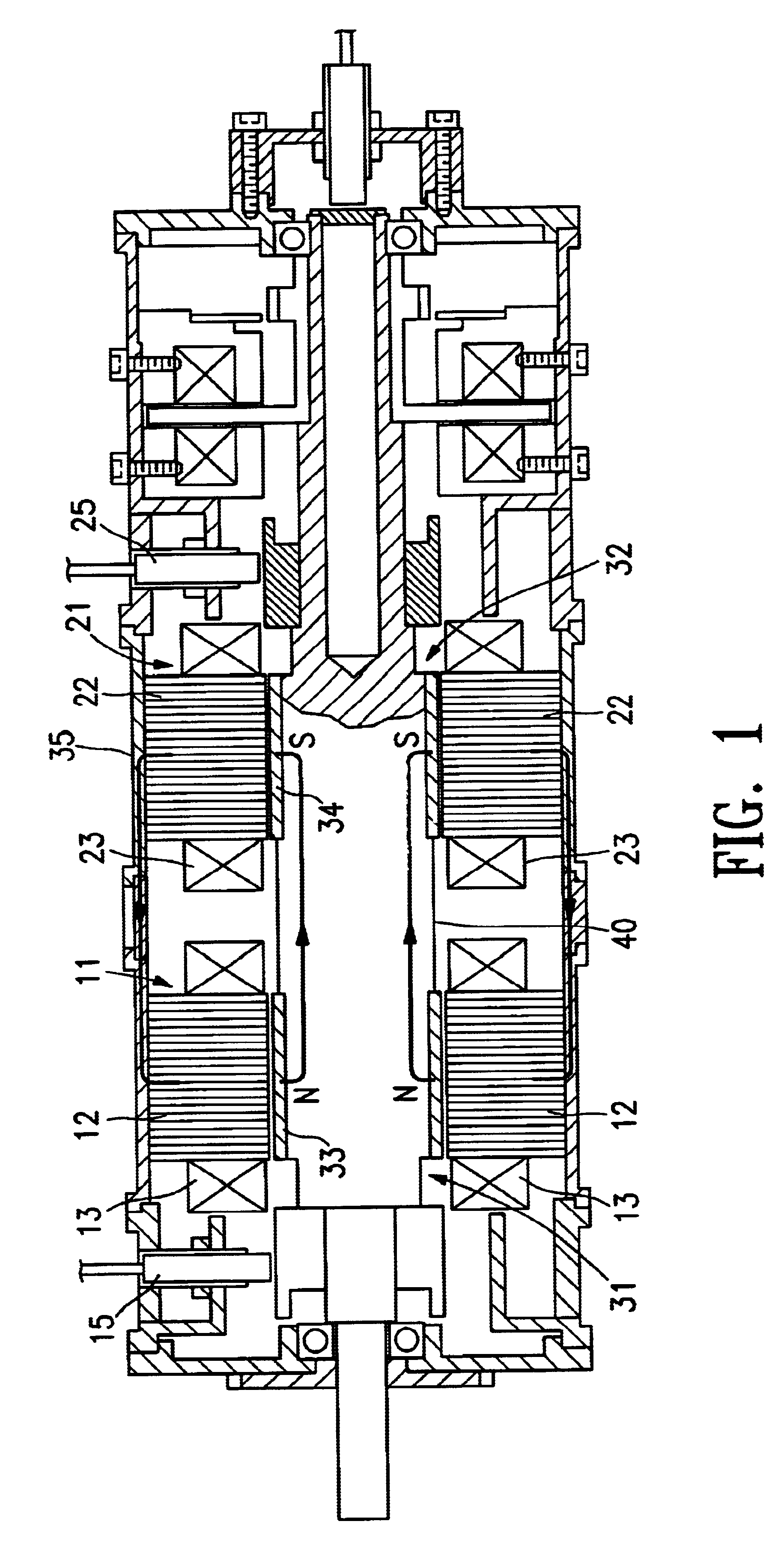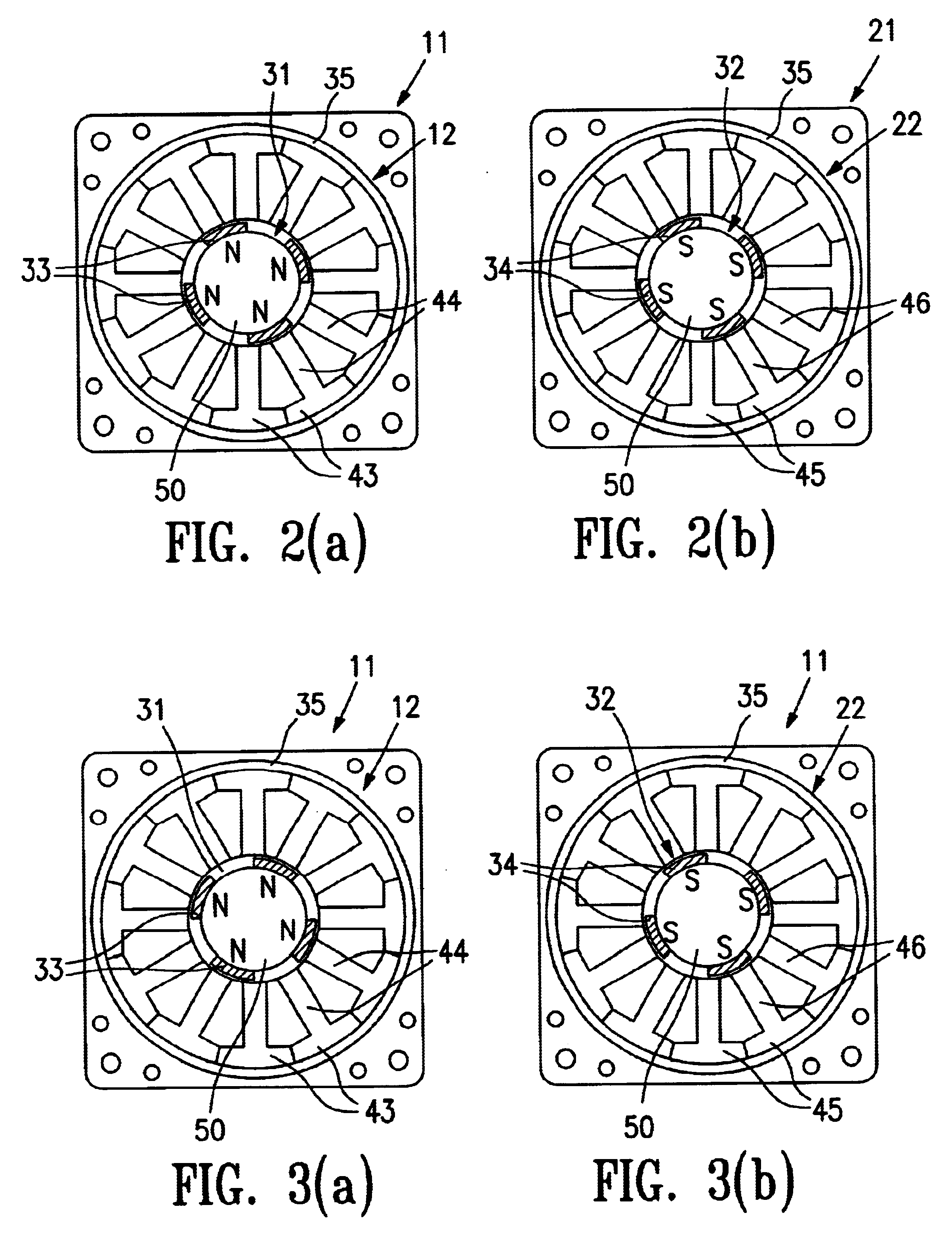Magnetic levitation motor and method for manufacturing the same
a technology of magnetization and levitation motor, which is applied in the direction of mechanical energy handling, dynamo-electric components, mechanical apparatus, etc., can solve the problems of reduced critical speed, increased length of rotor shaft, and reduced motor siz
- Summary
- Abstract
- Description
- Claims
- Application Information
AI Technical Summary
Benefits of technology
Problems solved by technology
Method used
Image
Examples
Embodiment Construction
Magnetic levitation motors in accordance with various embodiments of the present invention are described below with reference to the accompanying drawings.
FIGS. 13 and 14 show a magnetic levitation motor 1 having rotors 2a and 2b, stators 3a and 3b, a direct current magnetic field generation device 4, first stator windings 5a and 5b for controlled levitation, a second stator winding 6 for generating a rotation force, and a plurality of permanent magnets 7 provided on the rotors. A motor is formed between the rotor 2a equipped with the permanent magnet 7 and the stator 3a. Also, magnetic bearings are formed between the rotors 2a and 2b and the stators 3a and 3b, respectively.
The rotors 2a and 2b are composed of a magnetic material, and provided on a rotor shaft 8 of a magnetic material at locations spaced a specified distance from one another. Among the rotors 2a and 2b, the plural permanent magnets 7 are disposed around a peripheral surface of the rotor 2a in a manner that their mag...
PUM
 Login to View More
Login to View More Abstract
Description
Claims
Application Information
 Login to View More
Login to View More - R&D
- Intellectual Property
- Life Sciences
- Materials
- Tech Scout
- Unparalleled Data Quality
- Higher Quality Content
- 60% Fewer Hallucinations
Browse by: Latest US Patents, China's latest patents, Technical Efficacy Thesaurus, Application Domain, Technology Topic, Popular Technical Reports.
© 2025 PatSnap. All rights reserved.Legal|Privacy policy|Modern Slavery Act Transparency Statement|Sitemap|About US| Contact US: help@patsnap.com



